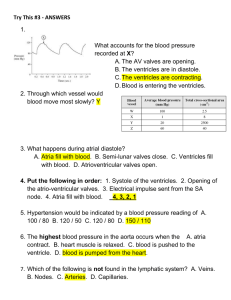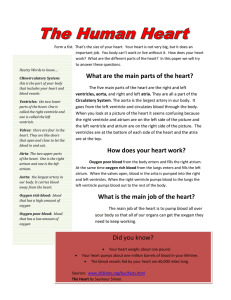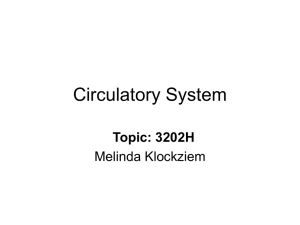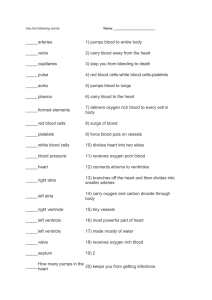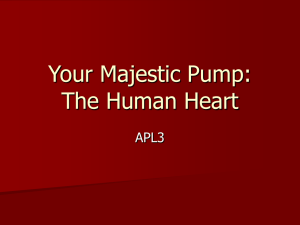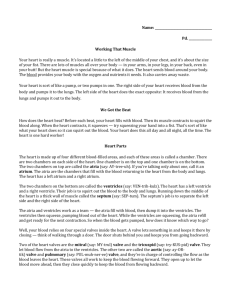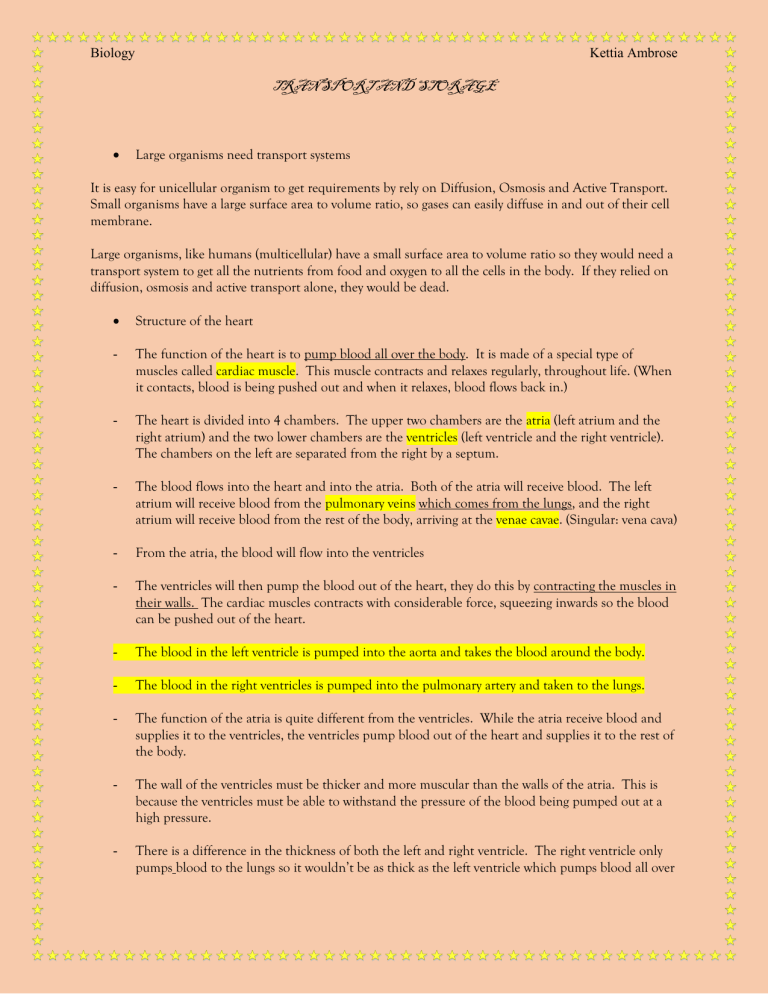
Biology Kettia Ambrose TRANSPORT AND STORAGE Large organisms need transport systems It is easy for unicellular organism to get requirements by rely on Diffusion, Osmosis and Active Transport. Small organisms have a large surface area to volume ratio, so gases can easily diffuse in and out of their cell membrane. Large organisms, like humans (multicellular) have a small surface area to volume ratio so they would need a transport system to get all the nutrients from food and oxygen to all the cells in the body. If they relied on diffusion, osmosis and active transport alone, they would be dead. Structure of the heart - The function of the heart is to pump blood all over the body. It is made of a special type of muscles called cardiac muscle. This muscle contracts and relaxes regularly, throughout life. (When it contacts, blood is being pushed out and when it relaxes, blood flows back in.) - The heart is divided into 4 chambers. The upper two chambers are the atria (left atrium and the right atrium) and the two lower chambers are the ventricles (left ventricle and the right ventricle). The chambers on the left are separated from the right by a septum. - The blood flows into the heart and into the atria. Both of the atria will receive blood. The left atrium will receive blood from the pulmonary veins which comes from the lungs, and the right atrium will receive blood from the rest of the body, arriving at the venae cavae. (Singular: vena cava) - From the atria, the blood will flow into the ventricles - The ventricles will then pump the blood out of the heart, they do this by contracting the muscles in their walls. The cardiac muscles contracts with considerable force, squeezing inwards so the blood can be pushed out of the heart. - The blood in the left ventricle is pumped into the aorta and takes the blood around the body. - The blood in the right ventricles is pumped into the pulmonary artery and taken to the lungs. - The function of the atria is quite different from the ventricles. While the atria receive blood and supplies it to the ventricles, the ventricles pump blood out of the heart and supplies it to the rest of the body. - The wall of the ventricles must be thicker and more muscular than the walls of the atria. This is because the ventricles must be able to withstand the pressure of the blood being pumped out at a high pressure. - There is a difference in the thickness of both the left and right ventricle. The right ventricle only pumps blood to the lungs so it wouldn’t be as thick as the left ventricle which pumps blood all over the body. This is because the lungs are close to the heart so the pressure of the blood being pumped would not be as high as the blood being pumped all over the body. The Coronary Arteries - The coronary arteries are vessels that supply blood to the heart muscles. - The heart muscles are so thick that food and oxygen in the blood inside the heart would not be able to diffuse to all the muscles quickly enough. The coronary arteries are the constant supplier of nutrients and oxygen so the heart can keep contracting and relaxing. - If a coronary artery is blocked, the cardiac muscle will fall short of oxygen, so they cannot respire, and they cannot obtain to contract. The heart will stop beating. This is called Cardiac Arrest or Heart Attack. Blood flows one way through valves - There is a valve between the left atrium and the left ventricle. - There is also a valve between the right atrium and the right ventricle. - These valves are called atrioventricular valves - The valve on the left side of the heart is made of two parts. This is called the bicuspid valve or mitral valve. - The valve on the right side of the heart is made up three parts. This is called the tricuspid valve. - The function of the valves is to stop the blood from the ventricles to flow back into the atrium. This is important because when the ventricles contract, the blood should be pushed up into the arteries and not back into the atrium. - As the ventricles contract, the pressure of the blood pushes up the valves. The tendons attached to them stop the valves from going too far up.
